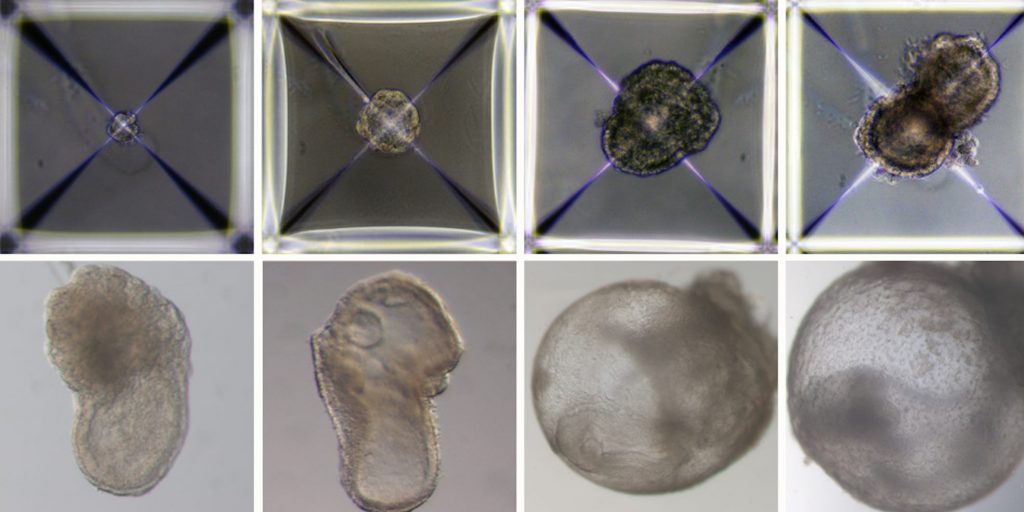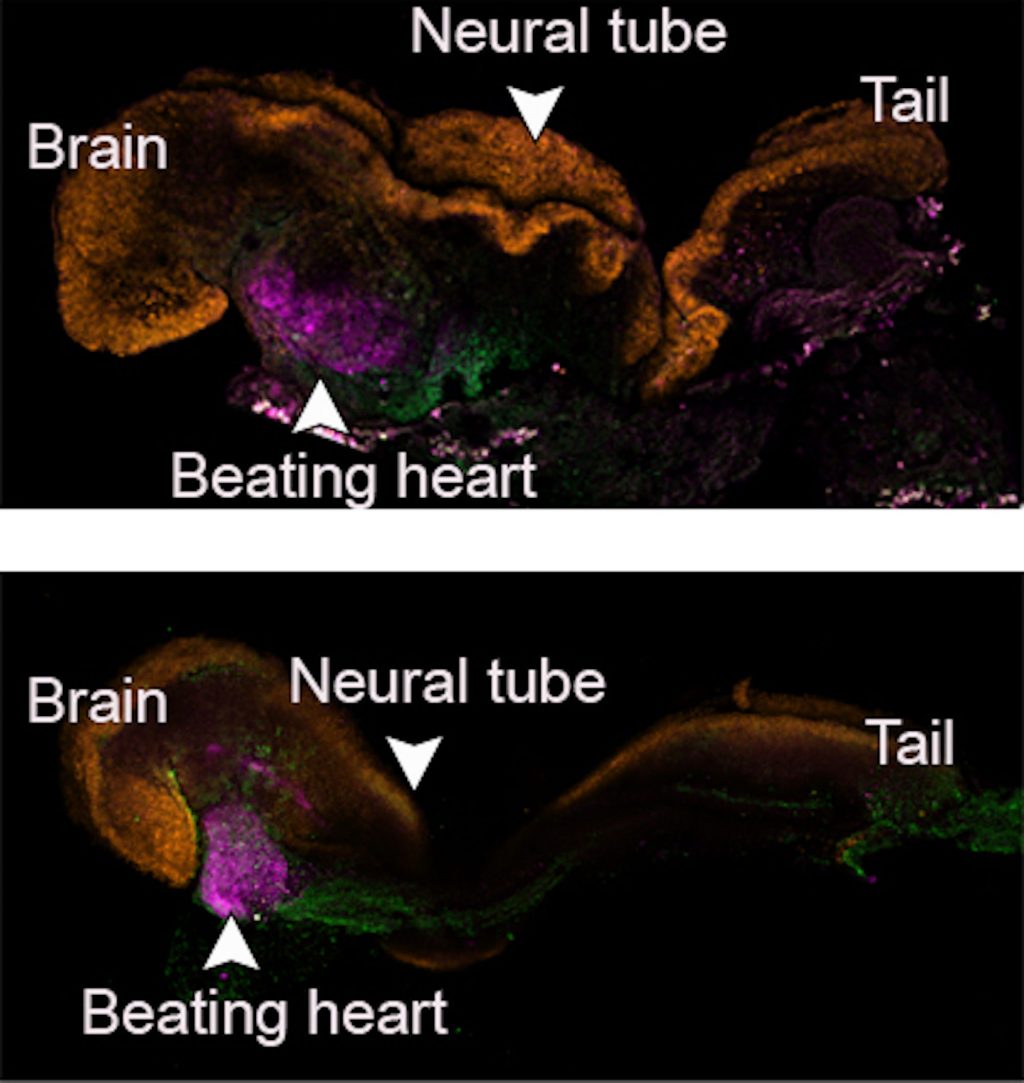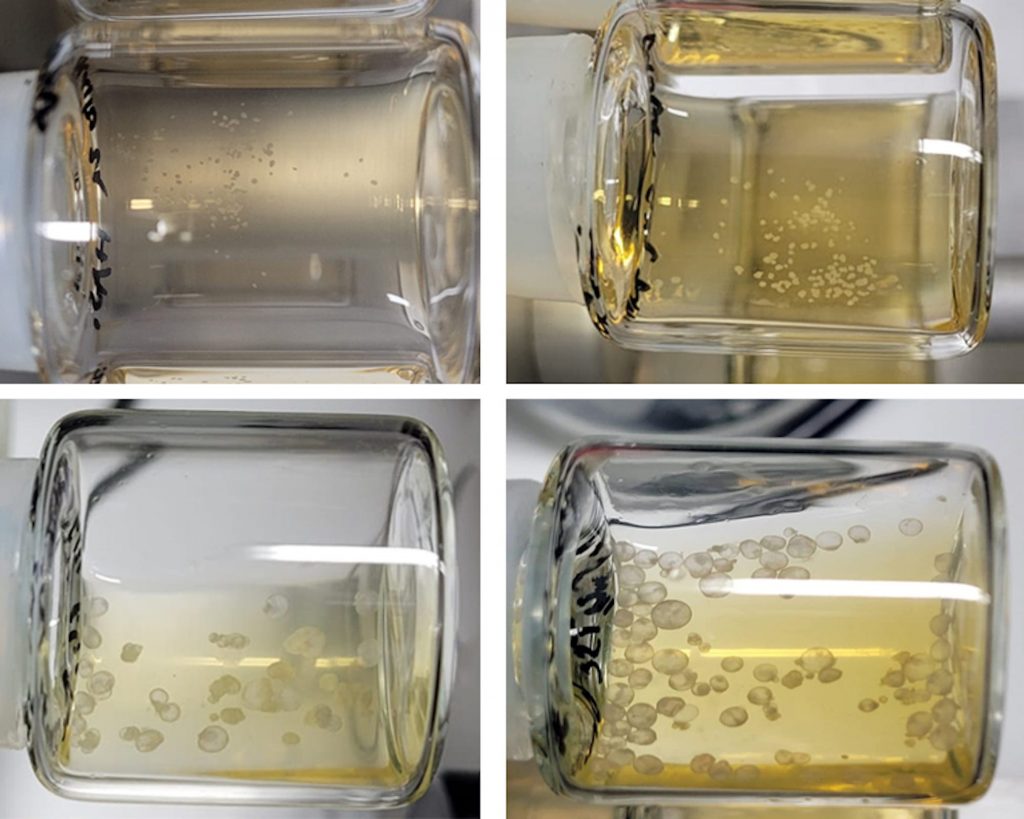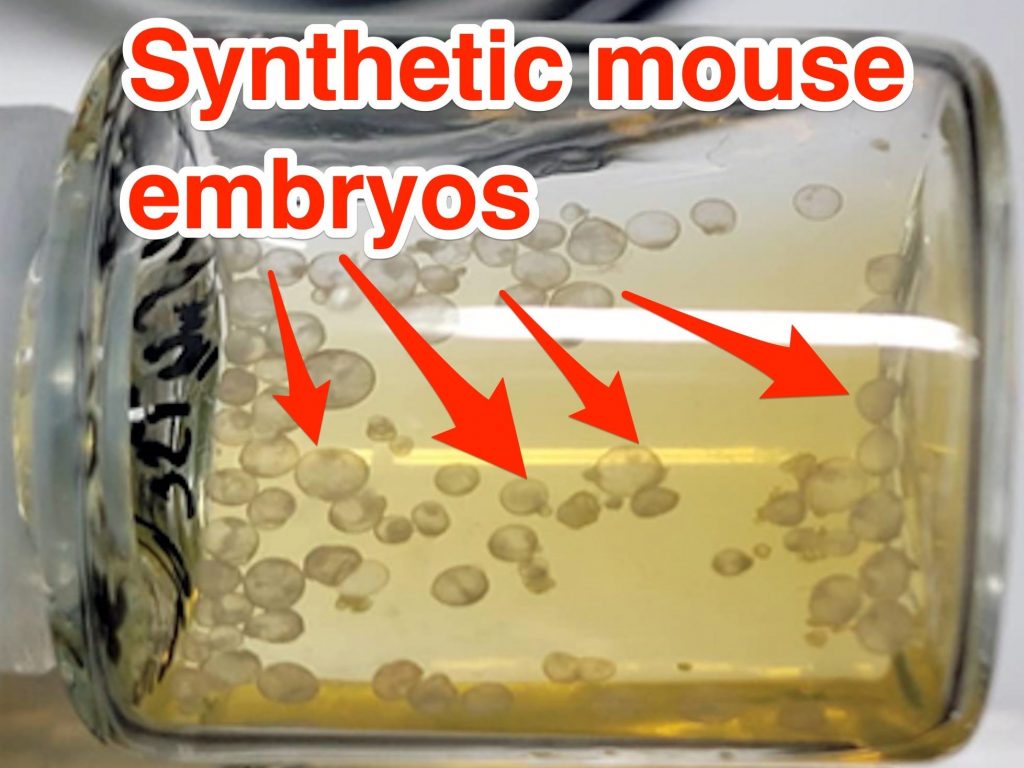- Scientists were able to grow "synthetic embryos" without the need sperm, eggs, or a womb.
- Studying these structures in mice could teach us how to grow organs for transplantation.
- Making human babies that way remains a distant prospect, fraught with ethical problems.
Scientists grew "synthetic embryos" from mice cells without using sperm, eggs, or a womb.
The process, a world first, was described in an issue of the peer-reviewed journal Cell on August 1.
The technology could be a starting point to grow organs from scratch, Jacob Hanna of Weizmann's Molecular Genetics Department, who headed the research team, said in a statement.
Independent experts said a lot more research would be needed before even considering growing a human embryo this way.
Still, this research makes this possibility a little more feasible, adding urgency to the ethical question, they said.

Cracking the synthetic embryo code
"The embryo is the best organ-making machine and the best 3D bioprinter — we tried to emulate what it does," said Hanna.
Hanna and his group had previously managed to grow mouse embryos outside of the womb, in glass containers.
But those embryos had been taken directly from real mice, and were fertilized. In the latest study, the embryos were grown from stem cells.
Cells learn what they are supposed to do by reading chemical signals sent to them by the body.
Scientists can mimic those signals to turn stem cells into fake organs in a dish for research, like mini-brains used to test drugs, for instance.
Most of Hanna's synthetic embryos died early on in the process. But a few managed to grow for 8.5 days, about half of the gestational time for a mouse.
At that point, they were 95% similar to normal mouse embryos and had grown a placenta and the beginnings of a spine and brain, a digestive tract, a beating heart, per the study.
However, these are not "real" embryos, Hanna told The Guardian. For one, they were not able to grow to term when they were put in a mouse uterus, he said.

Growing organs from synthetic embryos
Because these synthetic embryos are made from stem cells, rather than via fertilization, it is easier to scale the process and make lots at once.
That could be invaluable for science, because it could make huge amounts of synthetic embryos available for research without relying on lab animals.
If these cells can be coaxed into making the beginning of organs, studying them might reveal the building blocks to make organs from scratch to transplant them into humans without a need for donors, Hanna said.
"Our next challenge is to understand how stem cells know what to do — how they self-assemble into organs and find their way to their assigned spots inside an embryo," said Hanna.

Still a long way from synthetic human embryos
James Briscoe, a group leader at the Francis Crick Institute in London not involved in the research told The Guardian that the research raises ethical questions.
"Now is a good time to consider the best legal and ethical framework to regulate research and use of human synthetic embryos and to update the current regulations," he said.
We aren't going to see human embryos grown from stem cells anytime soon, Briscoe said. These synthetic mouse embryos were not capable of developing into a live mouse. We also know a lot less about human embryos, which take a lot longer to come to term and are a lot bigger.
Still, this innovation could put this field of research in motion, Paul Tesar, a developmental biologist at Case Western Reserve University School of Medicine who was not involved in the study, told STAT News.
"This is just one step, but a very important step for us to be able to study early development," Tesar said.
"We're crossing into the realm of being able to generate an embryo from scratch, and potentially a living organism. It's been a really notable switch for the field."
